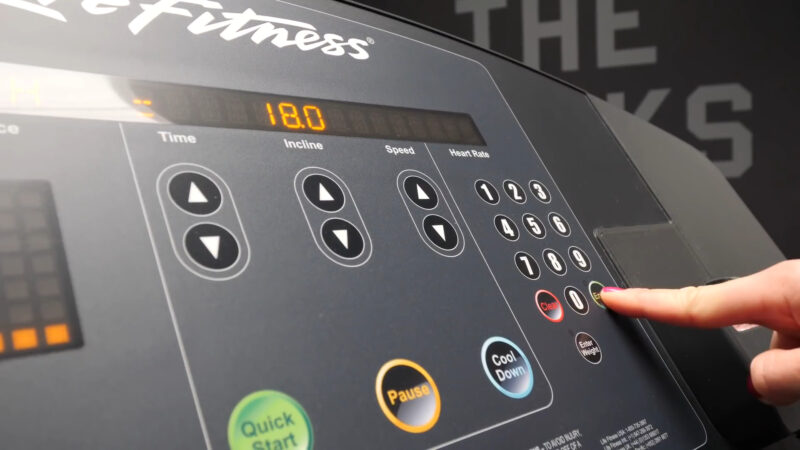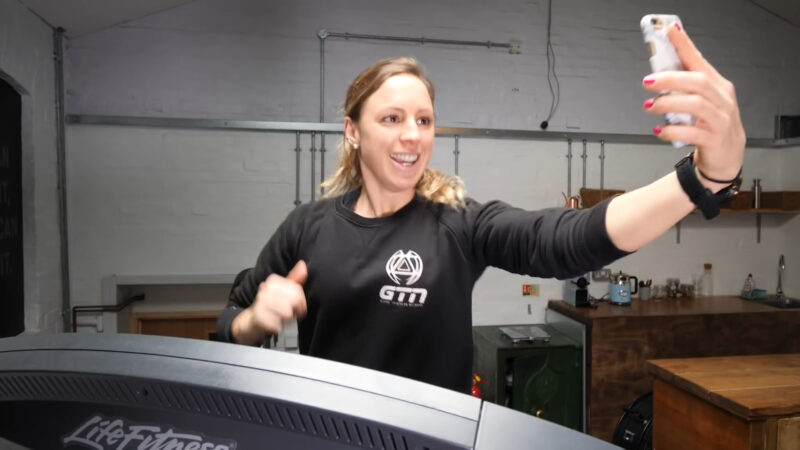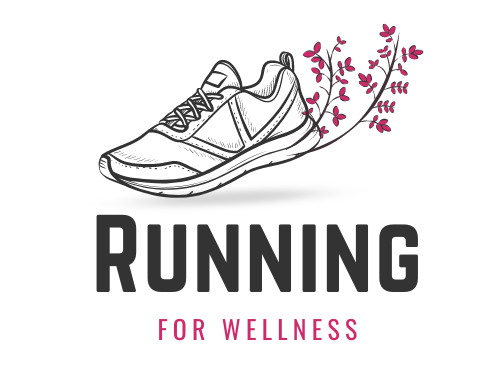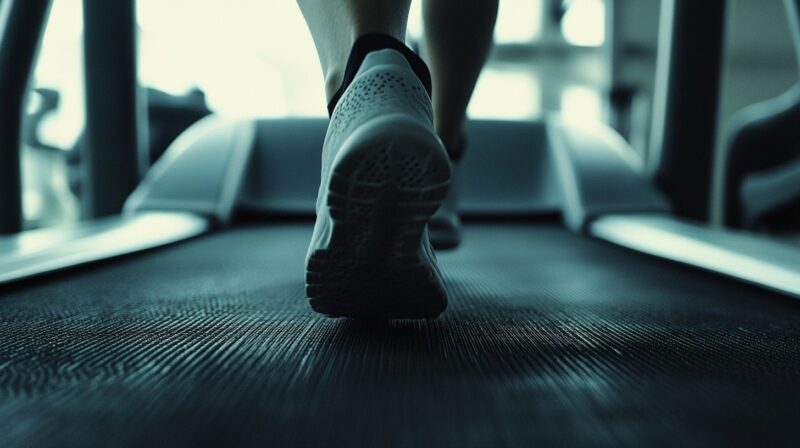A treadmill pace chart helps you easily convert your running pace from minutes per mile to miles per hour (MPH), providing a simple reference for anyone looking to get the most out of their treadmill workouts.
This chart is particularly useful for runners training for races, beginners building their stamina, or anyone aiming to improve their fitness levels through consistent treadmill sessions.
Having a clear understanding of your pace allows you to stay motivated and make informed adjustments to your workout routine.
Table of Contents
ToggleTreadmill Pace Chart
| Speed (mph) | Speed (kph) | Pace (mins/km) | Pace (mins/mile) | 5k Time | 10k Time | Half Marathon Time | Marathon Time |
|---|---|---|---|---|---|---|---|
| 3.8 | 6.12 | 9:49 | 15:47 | 49:03 | 1:38:07 | 3:26:59 | 6:53:59 |
| 4.0 | 6.44 | 9:19 | 15:00 | 46:36 | 1:33:12 | 3:16:38 | 6:33:17 |
| 5.0 | 8.05 | 7:27 | 12:00 | 37:17 | 1:14:34 | 2:37:19 | 5:14:38 |
| 6.0 | 9.66 | 6:13 | 10:00 | 31:04 | 1:02:08 | 2:11:06 | 4:22:11 |
| 7.0 | 11.27 | 5:20 | 8:34 | 26:38 | 53:16 | 1:52:22 | 3:44:44 |
Treadmill Running
Running on a treadmill can be a lifesaver when the weather outside is less than ideal—whether it’s raining, snowing, or too hot.
While some runners avoid the treadmill, seeing it as a monotonous replacement for outdoor running, others have come to embrace it as a practical and convenient alternative.
Personally, I’ve learned to appreciate treadmill running, and I’ve discovered ways to make it more enjoyable and productive.
Why the Treadmill Can Be Your Best Friend
One of the biggest advantages of treadmill running is the controlled environment. You can easily set your pace, distance, and incline with precision, making it easier to track your progress over time.
Unlike outdoor running, where factors like temperature, wind, and humidity can fluctuate, a treadmill offers a consistent, climate-controlled space that eliminates those variables.
For this reason, many athletes use treadmills for targeted workouts, such as speed training or hill repeats.
Beyond the comfort of avoiding unpredictable weather, running on a treadmill can also minimize your risk of injury from uneven surfaces.
For those recovering from an injury or looking for a low-impact option, treadmills can offer a more forgiving surface than hard pavement.
Making Treadmill Running Less Boring
For many, the monotony of staring at a wall or screen while running in place is a significant downside to treadmills.
- Interval Training: One of the best ways to break up the monotony is to incorporate interval workouts. Alternating between high-intensity sprints and recovery jogs not only makes time go by faster but also improves cardiovascular fitness.
- Entertainment: Whether you catch up on a TV show, listen to an engaging podcast, or pump up a playlist, entertainment can be a great distraction. Some people even save their favorite shows for treadmill runs, which turns the run into something to look forward to.
- Set Goals: Create small challenges for yourself, like increasing the incline every five minutes or finishing a set distance under a specific time.
These strategies can turn what would otherwise feel like a boring workout into an efficient and productive session.
Access to Treadmills

If you don’t have a treadmill at home, most gyms and fitness centers offer access to high-quality treadmills.
It can be particularly useful if you want to incorporate treadmill running into your routine but don’t have the space or budget to invest in your own machine.
Many gyms also offer a variety of treadmills with different features, such as built-in heart rate monitors, interval programs, and cushioning systems that reduce joint impact.
How Treadmill Running Can Supplement Your Training
No matter how you feel about treadmill running, it’s a valuable tool to incorporate into your training plan.
It allows you to maintain consistency when outdoor conditions aren’t favorable, ensuring you don’t miss important training sessions. Plus, the treadmill can be used to simulate outdoor runs.
You can adjust the incline to mimic hills or set the speed to match your normal outdoor pace. Doing so will help you avoid disruptions to your overall training plan and prevent unwanted injuries caused by inconsistent terrain or changing weather.
Adjusting to Treadmill Running
For runners who are used to the outdoors, it can take some time to adjust to treadmill running. The surface and the lack of forward motion can feel strange at first, and treadmills often display data differently.
Most treadmills are set to Miles Per Hour (MPH) and % incline, which might be unfamiliar to runners accustomed to thinking in terms of minutes per mile.
To bridge this gap, using a treadmill pace conversion chart can help you translate your outdoor running pace into treadmill settings.
This way, you can maintain the same effort level and avoid significant changes to your workout.
Pro Tip: Try the Run-Walk method for better fitness and health benefits and results.

Tips for Treadmill Running Success
- Proper warmup: Just as you would for an outdoor run, it’s crucial to do a dynamic warm-up before hopping on the treadmill.
- Stretch afterward: Treadmill runs can lead to tightness, especially in the calves and hamstrings. Make sure to stretch thoroughly post-run to maintain flexibility and m\wobility.
- Monitor your form: It’s easy to lose focus on proper running form while on a treadmill, especially when you’re bored.
- Vary the incline: Running on a flat surface the entire time can strain your muscles and become monotonous. Try adding a slight incline, even as little as 1-2%, to make your run more natural.
- Use interval training: Incorporate interval workouts by alternating between periods of faster running and slower recovery jogs or walks.
- Hydrate properly: Because you’re indoors and not exposed to wind or weather, it’s easy to underestimate how much you’re sweating.
- Focus on cadence: Treadmill running provides a perfect opportunity to focus on your stride cadence (steps per minute). Aim for a higher cadence (around 170-180 steps per minute) to reduce the impact on your joints and improve efficiency.
Ultimately, treadmill running doesn’t have to be a chore. With the right mindset and approach, it can become a valuable and even enjoyable part of your running routine.
Related Posts:
- Top 400 Hilarious Gym Quotes to Keep You Motivated
- How Many Calories Do You Burn Running for 30, 60, or…
- 25 Simple Running Motivation Tips To Get You Moving
- How Long Does It Take to Train for a Half Marathon?
- How Can You Start a Career as a Running Coach?
- Half Marathon Training Plan for Beginners - Simple…







